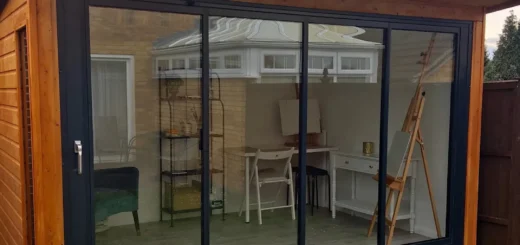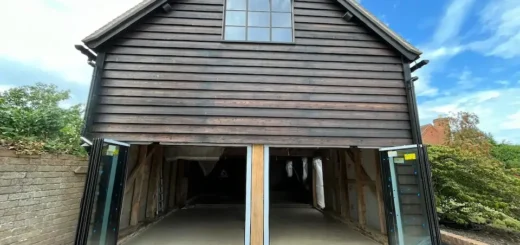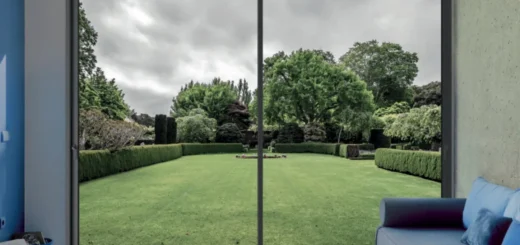Small Bifold Doors: Design Tips & Buying Guide
Table of Contents
Small bifold doors offer a practical way to divide rooms or open up garden access in compact spaces. These doors fold neatly against the wall, taking up minimal space while creating flexible living areas in your home.
What Makes Small Bifold Doors Different?
Unlike standard bifold doors, small bifold doors use narrower panels and modified hardware designed specifically for compact openings. The folding mechanism remains the same, but manufacturers adapt the components to work efficiently in tighter spaces.
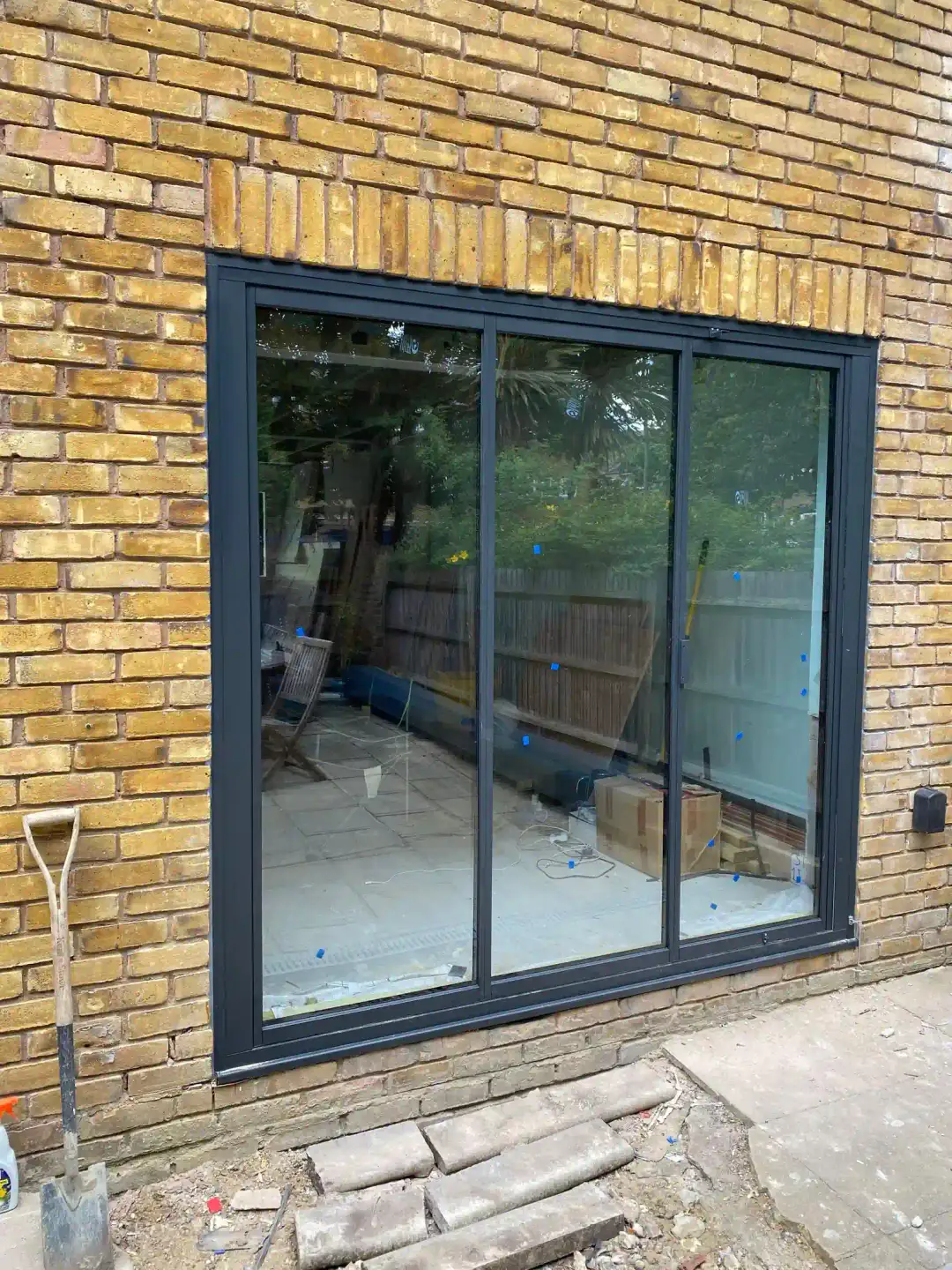
Minimum and Maximum Sizes
Small bifold doors typically come with panels ranging from 400mm to 800mm in width. The overall opening width is often the most important factor when determining your options – narrow spaces might suit a two-panel design, while slightly wider openings can accommodate three or four panels. Height restrictions tend to be more flexible, though most small bifold doors work best in standard-height doorways.
Configuration Options for Small Spaces
Two-panel designs work brilliantly in doorways between rooms, letting you fully open the space when needed. Three-panel arrangements suit slightly wider openings, offering more flexibility in how you partition your space. The panels fold back nearly flat against the wall, making them ideal for homes where space is at a premium.
Track Systems and Hardware
Small bifolding doors use specially designed tracks that support the weight of each panel while ensuring smooth operation. Top-hung systems prove particularly effective in compact spaces, as they don’t require a bottom track that might trip up residents. Concealed hinges and discrete handles complete the slim profile, while multi-point locking mechanisms provide security without adding bulk.
The track depth for small bifold doors measures less than standard systems, with some manufacturers producing ultra-slim options. Weather-resistant bearings in the rollers ensure the doors glide smoothly, while brush seals between panels block drafts and reduce noise transmission.
Design Ideas for Small Internal Bifold Doors
A typical internal doorway can become a striking glass feature with modern bifold doors. Rather than standard hinged doors that swing into precious floor space, bi-folding doors tuck neatly against the wall, making them perfect for tight spaces.
Colour Choices for Small Spaces
The right colour makes a huge difference in how your room feels. White frames help bounce light around compact areas, while dark greys and blacks create a bold statement without overwhelming the space. Powder-coated aluminium bifold doors come in a range of colours to match your style – from subtle creams to deep bronze. Rather than following passing trends, pick shades that work with your existing colour scheme.
Materials and Finishes
Glass bifold internal doors bring natural light deep into your home’s interior. The slim aluminium frames provide strength without bulk, letting you fit bi-folding interior doors even in limited space. Modern manufacturing techniques allow for incredibly narrow frames, giving you more glass area and less frame to look at.
When choosing materials, think about how you’ll use the doors:
- Aluminium offers slim sightlines and durability
- Timber brings warmth but needs regular maintenance
- Composite combines both benefits but costs more
- uPVC works well on a budget but has thicker frames
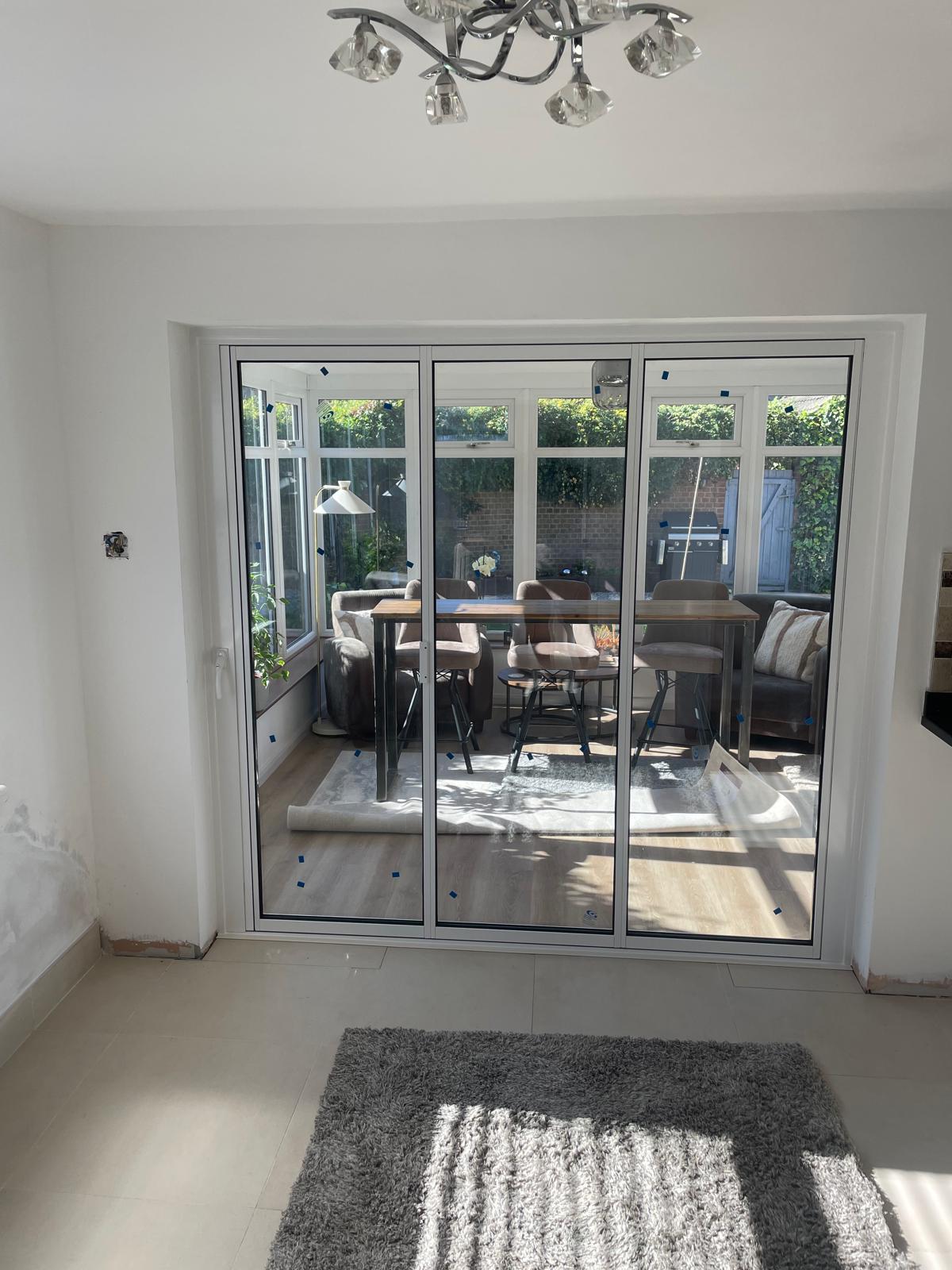
Hardware and Handle Options
Small bifold door systems need carefully chosen hardware. Magnetic catches keep the doors firmly closed without bulky locks, while flush handles sit flat against the frame. Pop-out handles tuck away when not in use, protecting walls and saving space. D-handles in matching finishes provide easy grip without protruding too far.
Glass Options and Privacy
Different glass types let you balance light with privacy. Frosted panels work brilliantly between bathrooms and bedrooms, while clear glass helps open up living spaces. Toughened safety glass comes as standard in bifold door systems, giving you peace of mind in busy family homes. Textured glass patterns add interest without blocking too much light – rippled effects scatter sunlight beautifully through your space.
Double-glazed panels trap air between two panes, helping control temperature and noise. Low-iron glass removes the slight green tint found in standard glass, giving you crystal-clear views through your doors. Laminated safety glass holds together if broken, making it ideal for areas with children or pets.
Frame Design and Profiles
Frames make a big difference to how your small bifolds look and work. Ultra-slim sightlines mean less frame and more glass, while strengthened corners ensure stability. Top-hung designs eliminate the need for a bottom track, creating a smooth floor surface. Concealed hinges keep the appearance clean and simple, perfect for modern homes where every millimetre counts.
Small Bifold Doors Room by Room
Dividing spaces in your home needs careful thought about how you live and work. Small bi folding doors bring flexibility to everyday spaces, letting you partition areas when needed or open them fully when you want a more spacious feel.
Kitchen-Diner Divisions
Kitchen bifold doors create adaptable boundaries between cooking and dining areas. During dinner parties, close the doors to hide cooking mess while still allowing glimpses through the glass. When entertaining, open them wide to connect both spaces. The panels stack neatly against the wall, taking up barely any space in either room.
Morning sunlight streams through glass panels, brightening both spaces naturally. Position your dining table near the doors to benefit from the extra light while keeping cooking odours contained when needed. Small bifold doors work particularly well in galley kitchens, where traditional swing doors might clash with cupboards or appliances.
For busy family meals, keep the bi-fold doors partially folded to maintain conversation while containing kitchen chaos. Steam and cooking smells stay in the kitchen, but you can still chat with family or keep an eye on children doing homework at the dining table. Double-glazed panels help reduce noise transfer, letting you run the dishwasher without disturbing after-dinner conversation.
Home Offices
Working from home demands quiet focus, but you might not want to feel completely cut off. Bi-fold doors strike this balance perfectly, offering sound insulation when closed while maintaining visual connection through the glass. These doors let you create a professional background for video calls without permanent walls.
A home office tucked into a corner of your living room becomes a proper workspace with small folding doors. During work hours, close the doors for privacy and concentration. After hours, fold them back completely to reclaim your living space. The ability to close off your workspace helps maintain a healthy separation between work and home life.
Natural light flows through the glass panels even when the bi-folding doors are closed, creating a bright, productive workspace. Choose frosted or textured glass for privacy during video calls while still benefiting from borrowed light. The slim profile of modern door systems means your office doesn’t feel boxed in, even in compact spaces.
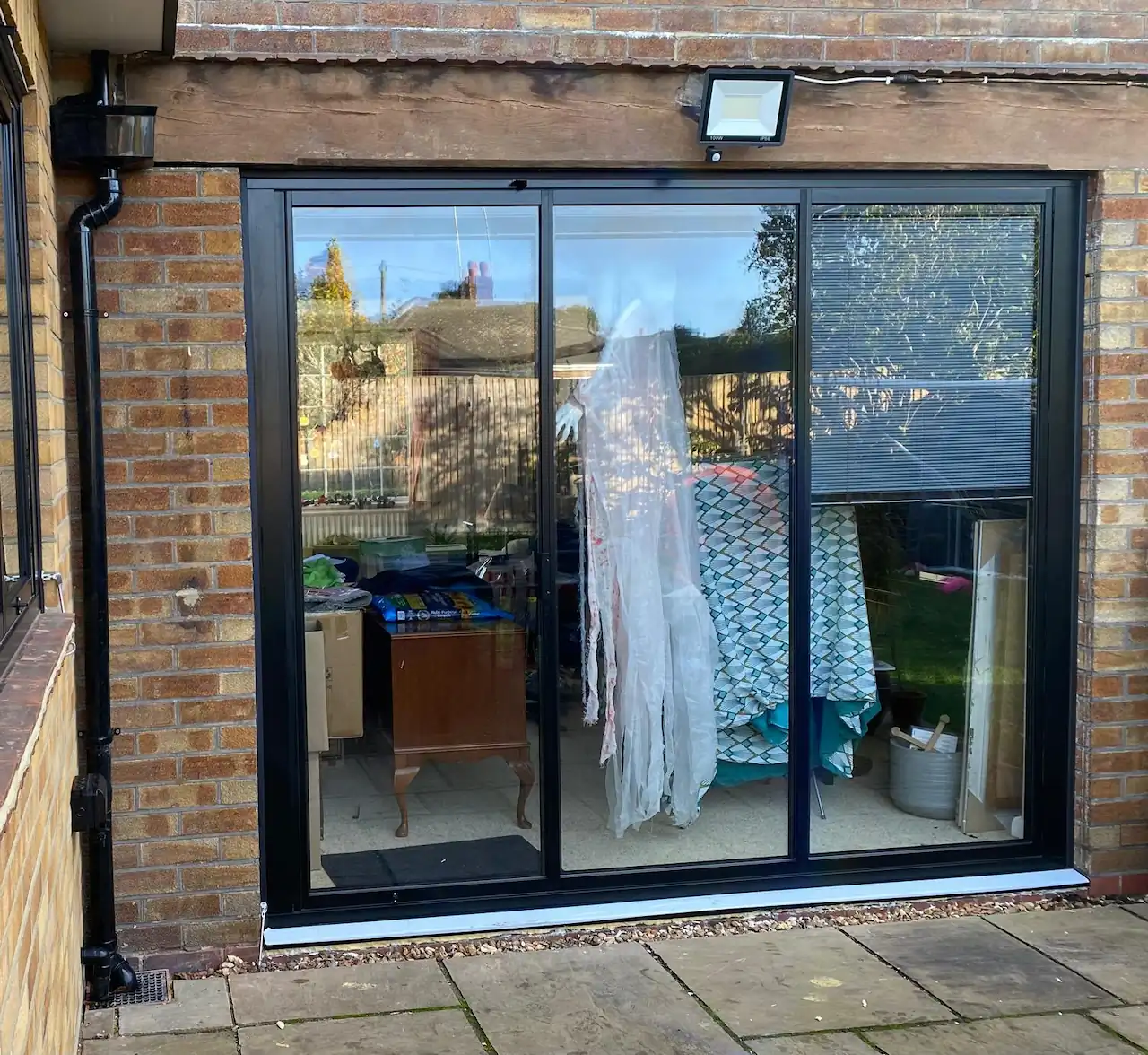
Living Rooms
Living rooms often serve multiple purposes throughout the day. Small bifold doors help these spaces adapt to different needs without major renovations. A cosy TV room becomes a larger entertaining space in minutes, while still maintaining the option for privacy when needed.
Reading nooks and study areas benefit from the flexibility these doors provide. Create a quiet corner that’s separate but not isolated, perfect for teenagers doing homework or adults wanting a peaceful spot to read. The doors’ ability to fold completely back means you’re not committing to a permanent division of your space.
Sound insulation becomes particularly important in living areas. Modern double-glazing technologies help reduce noise transfer, letting someone watch TV while others chat or read nearby. The doors’ smooth operation means you can quickly adjust your space without disrupting ongoing activities.
Conservatories
Older conservatories often feel disconnected from the rest of the house. Installing small bifold doors between your conservatory and adjacent rooms creates a more integrated living space. During summer months, keep the doors open to improve airflow and create a larger living area.
Temperature control improves with modern glazing options. Keep the doors closed during extreme weather while maintaining views into your conservatory. This helps manage heating costs while still enjoying natural light from your garden room. The doors provide an extra barrier against heat loss in winter, making your conservatory more usable year-round.
Furniture placement becomes more flexible with folding door systems. Arrange seating to face either direction, knowing you can easily change the room’s dynamic by operating the doors. Plants thrive in these light-filled spaces, and you can adjust ventilation by partially opening individual panels as needed.
External Small Bifold Doors
Opening onto a patio or garden brings different requirements than interior doors. Small bifold doors need careful weatherproofing and insulation, especially in British weather. These garden-facing doors must keep warmth in during winter while opening wide in summer to connect you with your outdoor space.
Weather Performance
The weather demands robust protection from rain and wind. Bifold external doors generally incorporate multi-point locking systems that pull the panels tightly together, blocking drafts and rain. Thermal breaks within the frames stop cold from transferring through the metal, while double-glazed units filled with argon gas improve performance far beyond older patio doors.
External bifolding doors also face constant exposure to elements, making material choice vital. Marine-grade stainless steel tracks resist corrosion from rain and salt air, while brush seals between panels stop water ingress during storms. Quality gaskets compress firmly when closed, creating a barrier against wind and rain without making the doors hard to open.
Security Features
Break-ins often target rear doors, so proper security measures matter greatly. Small bifold doors typically include multi-point locks that secure the panels at several points along their height. The glass itself uses laminated safety panels – if broken, they hold together rather than shattering. Locking handles incorporate key cylinders tested to police-approved standards.
Blinds and Shading
Light control needs careful planning in any glass installation. Bifold doors with integral blinds solve privacy and sun control elegantly. The blinds sit between the glass panes, protected from dust and damage. You can adjust them smoothly with magnetic controls, perfect for managing glare on sunny days.
Shading options for small internal bifold doors extend beyond integral systems. External awnings mount above the doors, providing shade without blocking your view. Modern blind materials reflect heat in summer while letting warming rays through in winter, helping keep your home energy efficient year-round.
Glass Specifications
Direct sunlight through glass can affect room temperature substantially. Bifold patio doors often use solar control glass, which limits heat gain while maintaining bright views. Low-emissivity coatings bounce heat back into your room during winter, reducing heating costs without darkening the glass.
Modern manufacturing allows for larger glass panels even in small external bifold doors. Toughened safety glass comes as standard, resistant to both impact and temperature changes. The glass edges receive special polishing to increase strength, while warm-edge spacer bars between panes reduce condensation around the frames.
Frame Materials
Modern aluminium frames offer excellent strength-to-weight ratios in small bifold doors. Powder-coated finishes resist fading and scratching, while thermal breaks prevent cold spots around the frames. You can choose different colours for inside and out – perhaps grey outside matching your windows, with white inside matching your interior trim.
Traditional timber frames suit period properties particularly well. Small bifold doors made from modified woods resist warping and rot, while modern micro-porous finishes let the wood breathe while repelling water. These natural materials need refreshing every few years to maintain their protective qualities.
Space-Saving Tips and Tricks
Planning your room layout correctly makes a huge difference to usability. Small bifold doors need careful thought about furniture placement, flooring, and lighting to ensure they work brilliantly in your space.
Furniture Placement
Choosing where to put your sofa or dining table affects how well small bi folding doors operate. Leave enough clearance for the panels to fold back fully – typically they need about 90mm per panel when stacked. Small bifold doors work best when furniture sits at least a metre away from the opening arc.
Modular furniture proves particularly useful near bifolding external doors. Small-scale sectional sofas can be rearranged as needed, while lightweight chairs move easily when you want to open the doors fully. Think about how traffic flows through your space when the doors are both open and closed.
Flooring Choices
Floor levels need careful planning around door thresholds. Small bifold doors often work best with matching flooring on both sides of the opening – this creates visual flow and removes trip hazards. Low-pile carpets won’t interfere with door operation, while hard floors should sit flush with the track system.
Consistent flooring helps small internal bifold doors look integrated into your space. If you’re using different materials in adjoining rooms, plan the transition point carefully. Floor colours that match or complement your door frames create a cohesive look without drawing attention to the threshold.
Lighting
Smart lighting placement improves how bi-fold doors look and work. Small bifold doors benefit from both natural and artificial light sources – downlights near the frame highlight the glass, while wall lights prevent dark corners when the doors are folded back.
Task lighting becomes particularly important in areas divided by doors. Position lights to work whether the doors are open or closed. Small spots or LED strips along the top track provide useful illumination without creating glare on the glass panels.
Storage
Built-in storage helps manage space around door openings effectively. Small bifold doors need clear operating zones, so fitted furniture can make better use of adjacent wall space. Floor-to-ceiling units next to the door frame provide valuable storage without impeding door operation.
Smart storage design near small bifolding doors improves daily usability. Pull-out systems let you access items easily without blocking the doors’ movement path. Wall-mounted shelving above the door frame uses otherwise dead space while keeping the floor clear for door operation.
Room Layout Strategies
Creating zones in open-plan spaces requires careful planning. Small bifold doors can define distinct areas without building permanent walls. Position key pieces like TV units or desks to work with both open and closed door configurations.
The way you arrange your space affects how well bifold patio doors integrate with your room. Small bifold doors shouldn’t dictate your entire layout – instead, plan furniture placement to complement their operation. Leave clear pathways when the doors are partially or fully opened, ensuring easy movement through the space.
Technical Details and Installation of Small Bifold Doors
Each property has unique requirements and challenges. Made to measure bi fold doors are able to fit openings precisely, ensuring proper operation and optimal thermal performance in nearly any home.
Frame Options
Modern manufacturing allows for incredibly slim frames without sacrificing strength. Small bifolding doors use reinforced aluminium sections that support the glass panels while taking up minimal visual space. Frame depths vary based on whether you’re fitting internal or external doors, with deeper profiles providing better insulation for outside walls.
Choosing the right frame design affects both appearance and efficiency. Small bifold doors often come in either standard or slim-line frame options. The slim-line versions use specially engineered profiles that reduce the visible frame width by up to 30%, which looks particularly striking in smaller openings.
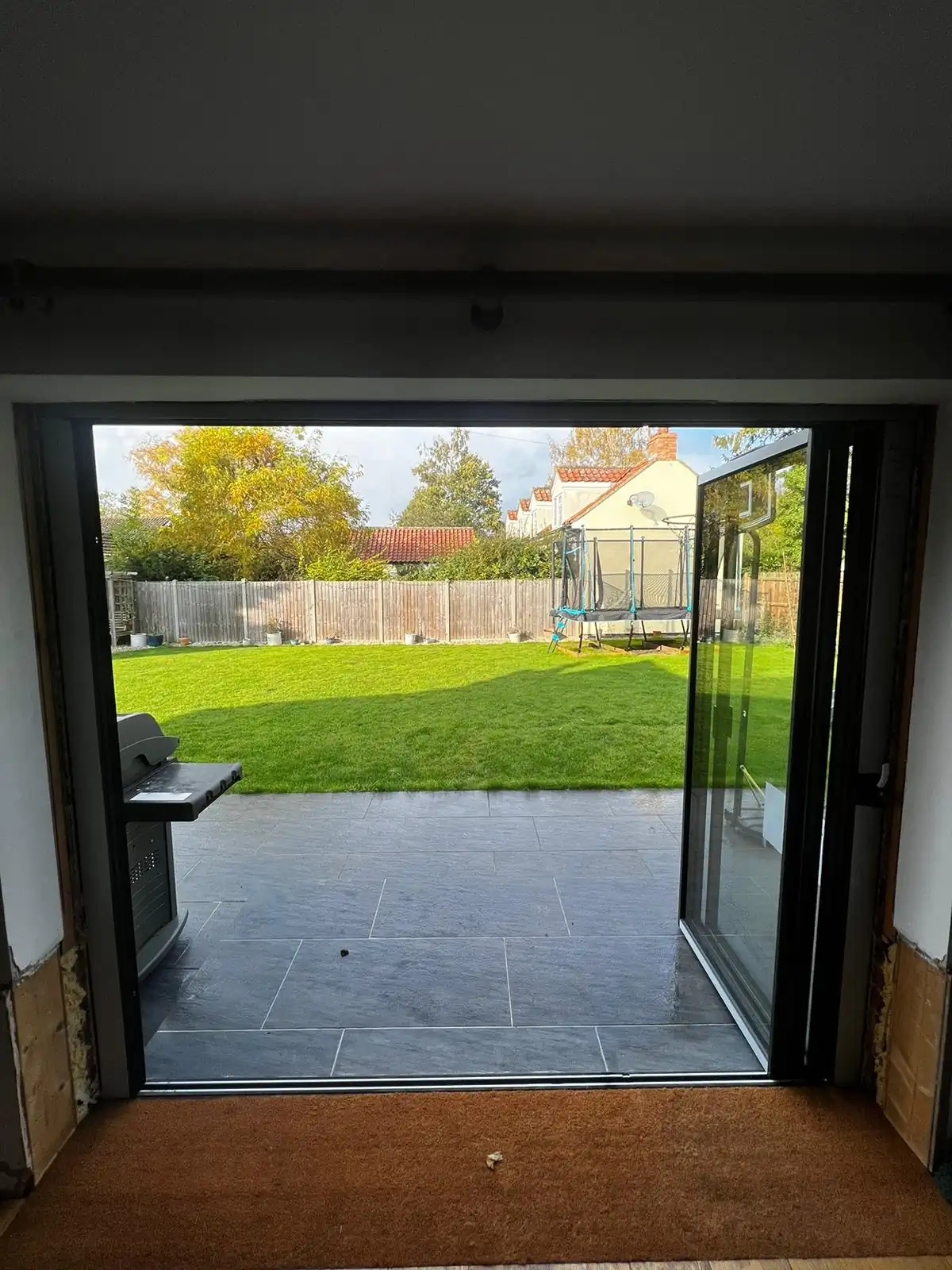
Threshold Choices
Floor levels and accessibility needs influence threshold selection. Small bifold doors work with several threshold types, from completely flat internal versions to weather-rated options for external doors. Rebated thresholds provide better weather protection but create a small step, while level thresholds allow smooth passage between spaces.
Materials used in thresholds vary by location and purpose. Small internal bifold doors often use simple aluminium channels, keeping the floor transition minimal.
Patio installations need more robust solutions – thermal breaks in the threshold prevent cold bridging, while drainage channels direct water away from your interior.
Installation Requirements
Proper fitting ensures years of smooth operation. Small bifold doors need precise measuring and installation – even tiny discrepancies can affect how well they open and close. The opening must be square and level, with adequate support above the frame to carry the door weight.
Load-bearing calculations play a key part in bifold patio doors installation. Small bifold doors concentrate their weight at specific points when open, so your builder might need to strengthen the opening. Steel supports or concrete lintels distribute the load safely into the surrounding wall.
Operation Systems
Track design affects both performance and durability. Small internal bifold doors usually work best with top-hung systems, eliminating the need for a bottom track that might trip people up. Running gear quality makes a huge difference to how smoothly the doors move and how long they last.
Modern hardware improves usability substantially. Small bifold doors incorporate precision-engineered rollers and guides that reduce operating force while preventing panel misalignment. Bottom guides keep the panels tracking correctly without creating obstacles, while magnetic catches hold them securely when folded back.
Maintenance Access
Regular upkeep helps prevent issues developing. Small bifold doors include access points for adjusting and maintaining the rolling mechanisms. Track covers remove easily for cleaning, while adjustable hinges let you fine-tune the panel alignment if settlement occurs.
Service life varies by material and usage patterns. Small bifolding doors in aluminium need minimal maintenance beyond occasional cleaning and hinge lubrication. Timber versions require more attention, with periodic refinishing to protect the wood and maintain its appearance.
About SunSeeker Doors
With over 20 years of experience, SunSeeker Doors remains at the forefront of door design with our quality-tested patio doors and related products, including the bespoke UltraSlim aluminium slide and pivot door system, Frameless Glass Doors, and Slimline Sliding Glass Doors. All of our doors are suitable for both internal and external use.
To request a free quotation, please use our online form. You may also contact 01582 492730, or email info@sunseekerdoors.co.uk if you have any questions.


